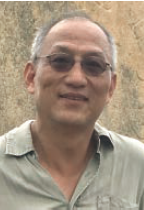Su-Huai Wei 1*
1Beijing Computational Science Research Center, Beijing, 100193, China
EXTENDED ABSTRACT: Conventional semiconductors, e.g., Si and GaAs with tetrahedral coordination (four-fold) structures, possess good stability but relatively low optical absorption compared with halide perovskites with octahedral coordination (six-fold) structures, which exhibit superior optical absorption but relatively poor stability. It is thus desirable to combine the complementary properties of four-fold and six-fold semiconductors to have a system with both good stability and optical absorption. To achieve such a goal, we investigate the spinel compounds A2B4(X = 0, S and Se) as potential candidates because they possess both four-fold and six-fold coordination in one structure. Here, we built four basic structure units as material genes to design various types of spinel compounds with optimal optical absorption. The optical absorption of a semiconductor is fundamentally determined by the dipole transition matrix element (IMl2) and joint density of states (Jcv). Our first-principles calculations show that in AB2X4 systems the type of cation at the B site determines the optical absorption. Two rules are identified through our study: (i) the sv cations with the valence s orbital at the valence band maximum at the B site (type-I, type-II) will lead to allowed transitions, Figure 1. The crystal structures of four types of whereas the sc cations with the valence s orbital at the conduction band minimum at the B site (type-III, type-IV) will lead to partially forbidden or fully forbidden transitions; (ii) when the sv cation is located at the B site, the A site with the sc cations (type-I) has higher IMl2, while the A site with the sv cations (type-II) has higher Jcv. Our study, therefore, provides guidelines to optimize the Jcv and IMl2, and thus absorption, through cation engineering in AB2X4compounds.
Keywords: inverse design; optical absorption; materials genome
REFERENCES:
[l] Q. Sun and S.-H. Wei, J. Mater. Chem. A, 10, 12503 (2022).


Su-Huai Wei is a Chair Professor and Head of the Materials and Energy Division of the Beijing Computational Science Research Center (CSRC) in China. His research is focused on developing electronic structure theory of semiconductors for optoelectronic applications. He has published more than 560 papers in leading scientific journals, including 74 in Physical Review Letters with more than 65,000 citations and an H index = 129. He is a Fellow of both American Physical Society and the Materials Research Society.